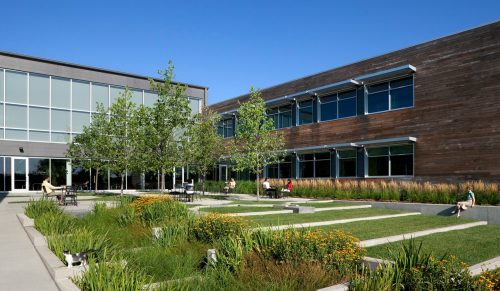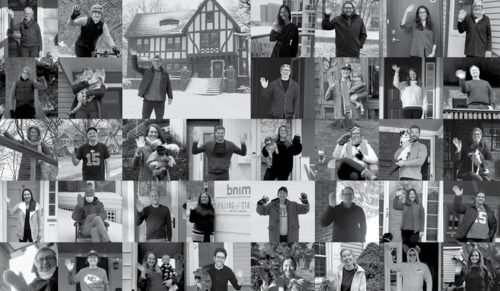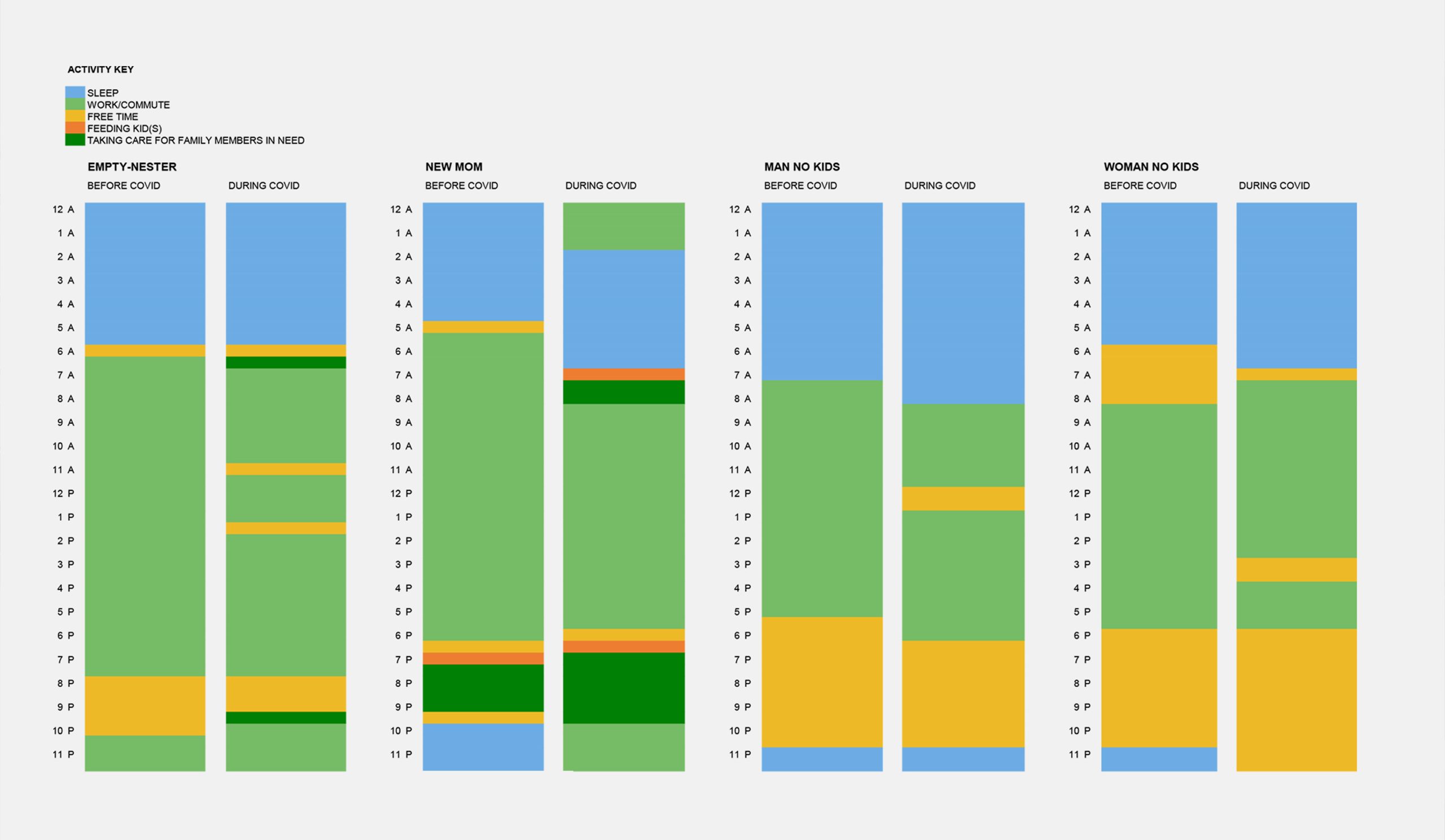
Visualizing Time | BNIM 2021 Symposium
For BNIM’s 2021 Symposium, our colleagues came together to focus on the theme of Reconnecting. To start off the day’s events, BNIM staff considered how our workdays, routines, and schedules have changed over the course of the past year. In January of 2020, I read an article that crystalized how much my life would change in the coming year. I was expecting a baby in May 2020, and this infographic (and article) was the clearest articulation I had seen of that change – showing division of time, interruptions, demands and disruptions.
Since March 2020, all of us have had disruptions and shifts in how we spend our days. Personally, this infographic has stuck with me throughout the year as I’ve experienced many shifts in what a typical day looks like. (Spring 2020 – initial work from home with free time sprawling as typical travel, social activities, and gatherings ground to a halt. Fall 2020 – transitioning back from leave and navigating childcare in a pandemic. Winter 2020 – modifying to working without any childcare).
To help reflect, visualize and share the shifts we have experienced (as individuals and teams) at BNIM during the pandemic, BNIMers filled out a template at the beginning of our Symposium illustrating how we typically spend our workdays. Using the template as a guide, we each filled out our own version – representing a typical day, a best case, or a worst case experienced over the past year.
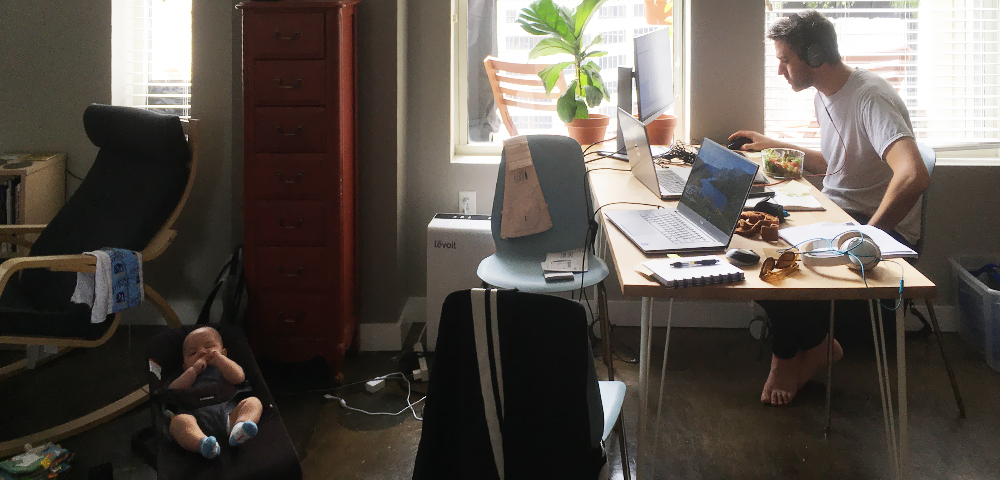
Five central themes emerged from this Visualizing Time activity:
1. Interwoven Schedule:
– Flexible work hours (at home) create days where work becomes interwoven with ‘work time’ and ‘free time’ or ‘family time,’ blended in shorter chunks throughout the day.
2. Value Extra Time With Family – Especially Where it Didn’t Happen Before:
– When we were working from home with our kids (despite the challenges), the 4 – 5:30 hour became precious. Typically, it’s a time of hectic errands, picking up kids, commuting, etc., but because of the circumstances we were able to take an hour or two that we normally don’t get and truly enjoy being with our families.
– Work travel was a considerable chunk of time for many people’s previous schedules – many people have spent considerably more time with their partners, with their children, with their families than they (ever?) have before.
3. Disrupted Routines:
– Some previously daily routines and practices were disrupted. It has been difficult to incorporate these back in our new schedules while everything happens in the same spaces.
– Some people were working longer, expanding our work day without the physical separation between work and home.
– Sometimes this schedule, combined with thinking about work at nighttime, interrupting sleep patterns.
4. Expanded Free Time:
– Some people found expanded free time compared to pre-pandemic times due to many reasons (no commute time, focused effort on not working outside of work hours). This seems to be more common for folks without children or whose children are older. For many, their work schedules were not that different from before.
5. Childcare is Essential:
– There is an undeniable difference between the pandemic experience of those caring for other family members – especially young children vs. those without those obligations.
– Childcare for young children (and School) is essential for anything resembling ‘normal’ workdays to happen.
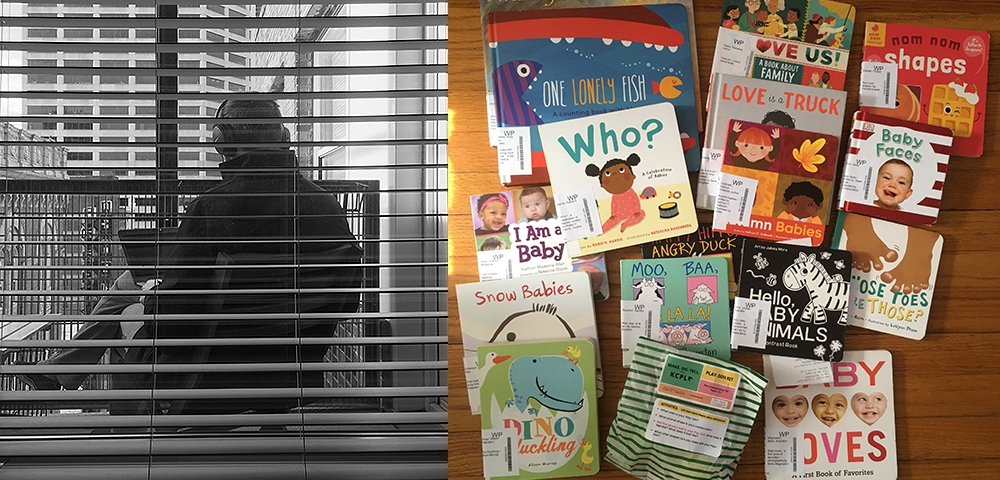
This simple exercise allowed us to quickly level and see what we all know has happened over the past year. Recognizing how our co-workers all have experienced different changes, we have found new ways to work together despite our multiple and asynchronous schedules.
HEADER IMAGE- ‘VISUALIZING TIME’ ACTIVITY – BNIM STAFF VISUALIZE THEIR OWN SCHEDULES AND THE SCHEDULES OF COLLEAGUES DURING THE PAST YEAR.
